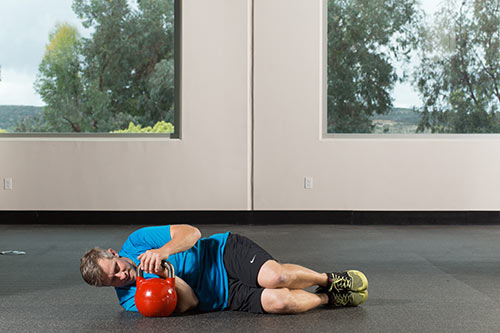
Big Brain Academy Programs
Kerbal Space Program; Mighty Morphin Power Rangers; Mighty Morphin Power Rangers: The Fighting Edition. Big Brain Academy; Zone of the Enders: The Fist of Mars; Europa Universalis. Brain Ball - Big Data; CyberStorm 2: Corporate Wars; Super Xblox 360! Hexcells Plus; Crusader Kings. For the past 15 years, the American Academy of Pediatrics (AAP) has expressed its concerns about the amount of time children and adolescents spend viewing television and the content of what they view. Loyola marymount. 1 According to recent Nielsen Media Research data, the average child or adolescent watches an average of nearly 3 hours of television per day. 2 This figure does not include time spent watching.
.: June 30, 2005.: June 5, 2006.: July 5, 2006.: July 7, 2006.: Cancelled,Mode(s),Big Brain Academy is a published and developed by for the handheld video game console. It was first released in Japan on June 30, 2005, and was later released in North America on June 5, 2006, in Australia on July 5, 2006, and in Europe on July 7, 2006. The game was planned to be released in China for the iQue DS system, and even appeared in the system's trailer, but this release was cancelled for unknown reasons.
It has been compared to. It is marketed under Nintendo's brand.A sequel, was released on the in April 2007.The TV advertisements for Big Brain Academy were not only to debut the game, but also the system itself.It is also a board game. Contents.Gameplay In Big Brain Academy, tests are done in order to measure the player's brain's mass. The heavier the brain, the smarter the brain is or the better its reaction time.
There is no single game mechanism to Big Brain Academy; as it is an assortment of puzzles with no one puzzle having greater priority than the other. There are three modes of play: Test mode, Practice mode, and Versus mode.Test mode Test mode consists of a formal test containing five puzzles, with one puzzle taken at random from each of the five categories to determine the player's brain mass.After the test, the player is given a letter grade. Lobe (the 'headmaster' of Big Brain Academy) also assesses what areas the player needs to improve in and what ranking they would be.
Professions include museum curator, librarian, astronaut, investor, fashion stylist, diplomat, cave man, Isaac Newton, Leonardo da Vinci, Michelangelo, politician, poet, banker, doctor, musician, etc.There are five different categories of tests with three activities per category. The categories are (followed by their activities):. Think (Logic-themed questions). Analyze (Reason-based questions).
Compute (Math-themed questions). Identify (Visual-themed questions). Memorize (Memory-based questions)Practice mode Practice mode allows the player to select which specific activity he or she wants to do in order to train their brain. The activities available for play are the same as those available in Test mode. Each activity has three levels of difficulty, and the player can earn either a bronze, silver, gold, or platinum medal for achieving a certain brain mass on each difficulty level.
A mass of 50 grams is required for a bronze medal, 150 grams for silver, and 250 for gold. The mass required for a platinum medal differs for each difficulty level of each activity, however the exact mass required for each platinum medal is not specified in the game.Versus mode In Versus mode, players can compete to determine who has the heaviest brain. Anywhere from 1 to 7 players can join a hosting player, whether or not they themselves have a copy of the game.Reception ReceptionReview scoresPublicationScore7/107/108.1/1013/20As of March 31, 2008, Big Brain Academy had sold 5.01 million copies worldwide. It received a 'Double Platinum' sales award from the (ELSPA), indicating sales of at least 600,000 copies in the United Kingdom. Harris, Craig (June 2, 2006). Retrieved 2018-10-13. Bramwell, Tom (June 15, 2006).
Retrieved April 21, 2020. Gerstmann, Jeff (June 5, 2006). Retrieved April 21, 2020. Harris, Craig (June 3, 2006). Retrieved April 21, 2020. Logan (July 3, 2006).
Retrieved April 21, 2020. (PDF) from the original on 10 September 2008. Retrieved 2008-08-03. Archived from on May 20, 2009. Retrieved June 8, 2019.
Caoili, Eric (November 26, 2008). Archived from on September 18, 2017.External links. Pixel devil and the broken cartridge printer. on.
AAAResearch shows that training with BrainHQ’s visual attention exercises—especially Double Decision—can reduce dangerous driving maneuvers by 38%, decrease stopping distance by 22 feet at 55 mph, and cut at-fault crashes by 48%. That’s why AAA started offering a set of these exercises to many of their insurance customers. More than 50,000 drivers have now used the exercises to improve their driving safety and confidence behind the wheel. And it works: AAA gets 30% fewer claims from people who trained with these exercises. ACTIVEACTIVE is one of the largest, longest, and best-known studies on cognitive training. It found that “speed training” ( now updated as Double Decision, and only available in BrainHQ) showed remarkable results, both on standard tests and in real-world activities.
From improved cognitive performance to better health, better mood, more self-confidence, and fewer car crashes, speed training results show the exercise is worth the effort. What’s more, benefits last—the found that participants still retained some of their improvements even 10 years later.